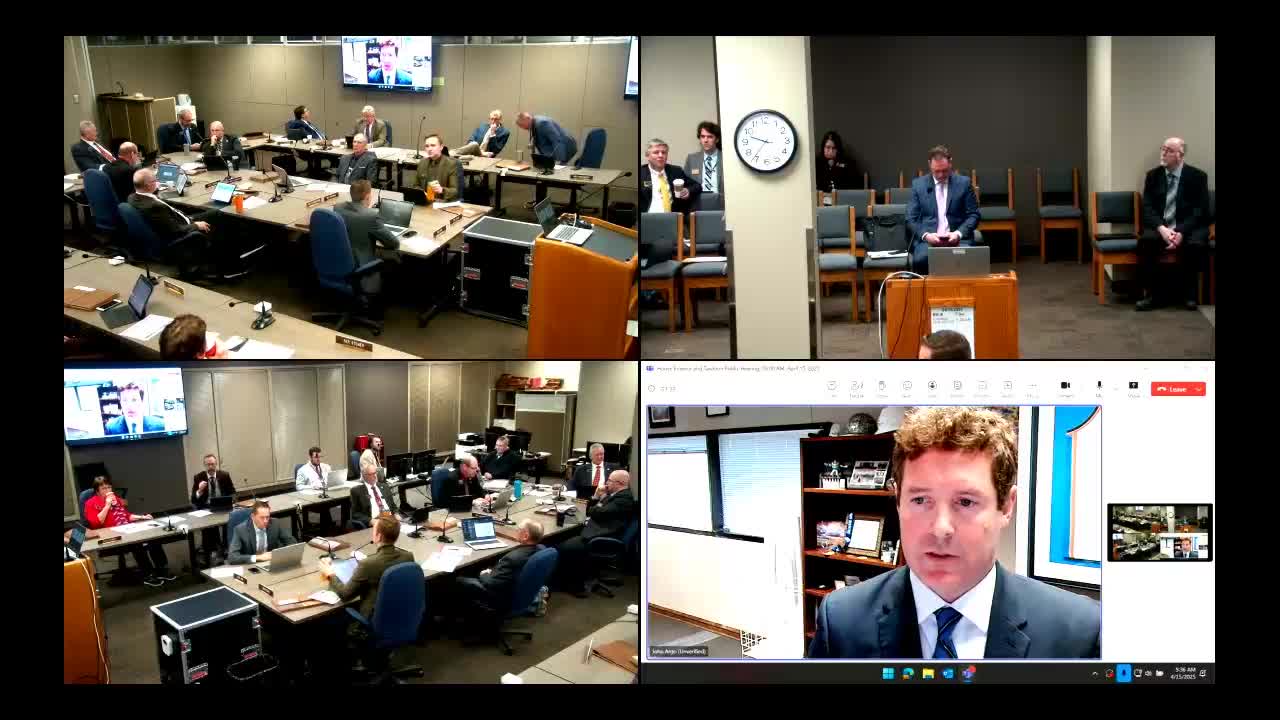Continental Resources reports decline in North Dakota drilling due to competition and prices
April 15, 2025 | Finance and Taxation, House of Representatives, Legislative, North Dakota
This article was created by AI summarizing key points discussed. AI makes mistakes, so for full details and context, please refer to the video of the full meeting. Please report any errors so we can fix them. Report an error »

In a recent meeting of the North Dakota Legislature's House Finance and Taxation Committee, the future of the state's oil industry took center stage, revealing both challenges and opportunities for growth. As the discussion unfolded, the stark reality of the current drilling landscape in Williston emerged: the region has maintained a steady count of five drilling rigs since last year, but that number is expected to drop to four in the coming months. This decline is attributed to a combination of falling commodity prices, rising operational costs, and increased competition for investment from other oil-rich regions like the Permian Basin.
The speaker, representing Continental Resources, emphasized the need for innovative approaches to stimulate exploration and development in North Dakota. He pointed out that while the state has a wealth of untapped resources, the industry is currently not investing in exploration at the levels seen in the past. The speaker lamented the lack of "wildcat" drilling—exploratory wells that could lead to significant discoveries—highlighting that the industry has shifted its focus towards maximizing shareholder returns rather than taking risks on new ventures.
A historical perspective was provided, illustrating how past exploratory efforts led to the shale oil boom that transformed North Dakota into a leading oil producer. The speaker urged lawmakers to consider incentives that could encourage companies to take on the risks associated with exploration, which could ultimately unlock new resources and drive economic growth for the state.
One compelling example shared was the Hawkinson unit, where initial exploratory wells, despite early failures, eventually led to the discovery of substantial oil reserves. The speaker argued that had there been tax incentives in place during those early drilling efforts, the state could have seen significant financial returns from production taxes and ancillary economic benefits.
As the meeting concluded, the overarching message was clear: North Dakota's oil industry stands at a crossroads. With the right incentives and a renewed focus on exploration, the state could reignite its position as a leader in energy production, ensuring a prosperous future for its communities and economy. The call to action resonated with lawmakers, urging them to consider policies that would foster innovation and investment in the state's rich energy landscape.
The speaker, representing Continental Resources, emphasized the need for innovative approaches to stimulate exploration and development in North Dakota. He pointed out that while the state has a wealth of untapped resources, the industry is currently not investing in exploration at the levels seen in the past. The speaker lamented the lack of "wildcat" drilling—exploratory wells that could lead to significant discoveries—highlighting that the industry has shifted its focus towards maximizing shareholder returns rather than taking risks on new ventures.
A historical perspective was provided, illustrating how past exploratory efforts led to the shale oil boom that transformed North Dakota into a leading oil producer. The speaker urged lawmakers to consider incentives that could encourage companies to take on the risks associated with exploration, which could ultimately unlock new resources and drive economic growth for the state.
One compelling example shared was the Hawkinson unit, where initial exploratory wells, despite early failures, eventually led to the discovery of substantial oil reserves. The speaker argued that had there been tax incentives in place during those early drilling efforts, the state could have seen significant financial returns from production taxes and ancillary economic benefits.
As the meeting concluded, the overarching message was clear: North Dakota's oil industry stands at a crossroads. With the right incentives and a renewed focus on exploration, the state could reignite its position as a leader in energy production, ensuring a prosperous future for its communities and economy. The call to action resonated with lawmakers, urging them to consider policies that would foster innovation and investment in the state's rich energy landscape.
View full meeting
This article is based on a recent meeting—watch the full video and explore the complete transcript for deeper insights into the discussion.
View full meeting
